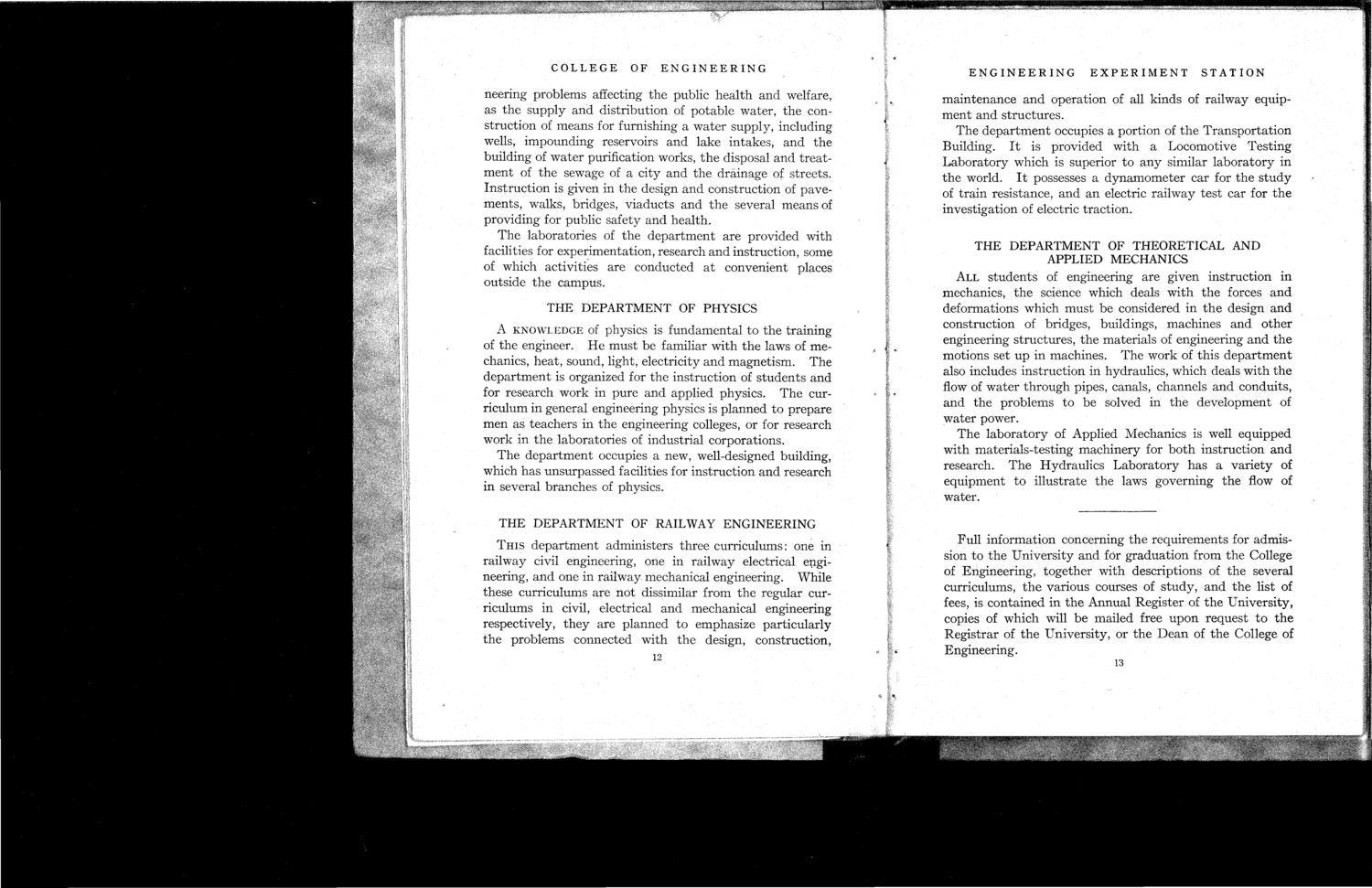| |
| |
Caption: Book - Pictorial Guide to College of Engineering (1919)
This is a reduced-resolution page image for fast online browsing.

EXTRACTED TEXT FROM PAGE:
COLLEGE OF ENGINEERING ENGINEERING EXPERIMENT STATION neering problems affecting the public health and welfare, as the supply and distribution of potable water, the. construction of means for furnishing a water supply, including wells, impounding reservoirs and lake intakes, and the building of water purification works, the disposal and treatment of the sewage of a city and the drainage of streets. Instruction is given in the design and construction of pavements, walks, bridges, viaducts and the several means of providing for public safety and health. The laboratories of the department are provided with facilities for experimentation, research and instruction, some of which activities are conducted at convenient places outside the campus. THE DEPARTMENT OF PHYSICS A KNOWLEDGE of physics is fundamental to the training of the engineer. He must be familiar with the laws of mechanics, heat, sound, light, electricity and magnetism. The department is organized for the instruction of students and for research work in pure and applied physics. The curriculum in general engineering physics is planned to prepare men as teachers in the engineering colleges, or for research work in the laboratories of industrial corporations. The department occupies a new, well-designed building, which has unsurpassed facilities for instruction and research in several branches of physics. THE DEPARTMENT OF RAILWAY ENGINEERING department administers three curriculums: one in railway civil engineering, one in railway electrical engineering, and one in railway mechanical engineering. While these curriculums are not dissimilar from the regular curriculums in civil, electrical and mechanical engineering respectively, they are planned to emphasize particularly the problems connected with the design, construction, THIS maintenance and operation of all kinds of railway equipment and structures. The department occupies a portion of the Transportation Building. It is provided with a Locomotive Testing Laboratory which is superior to any similar laboratory in the world. It possesses a dynamometer car for the study of train resistance, and an electric railway test car for the investigation of electric traction. THE DEPARTMENT OF THEORETICAL AND APPLIED MECHANICS ALL students of engineering are given instruction in mechanics, the science which deals with the forces and deformations which must be considered in the design and construction of bridges, buildings, machines and other engineering structures, the materials of engineering and the motions set up in machines. The work of this department also includes instruction in hydraulics, which deals with the flow of water through pipes, canals, channels and conduits, and the problems to be solved in the development of water power. The laboratory of Applied Mechanics is well equipped with materials-testing machinery for both instruction and research. The Hydraulics Laboratory has a variety of equipment to illustrate the laws governing the flow of water. Full information concerning the requirements for admission to the University and for graduation from the College of Engineering, together with descriptions of the several curriculums, the various courses of study, and the list of fees, is contained in the Annual Register of the University, copies of which will be mailed free upon request to the Registrar of the University, or the Dean of the College of Engineering. 13 12
| |